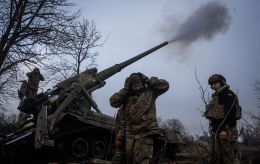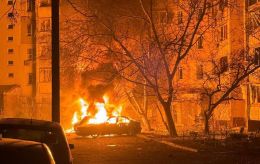Southern stronghold. Life and dreams of Kherson residents two years after the city's liberation
 The liberation of Kherson on November 11, 2022 (photo: Getty Images, provided by interlocutors)
The liberation of Kherson on November 11, 2022 (photo: Getty Images, provided by interlocutors)
Two years ago, on November 11, 2022, the Armed Forces of Ukraine liberated Kherson and part of the right bank from the Russian occupation. Since then, the city has been living under constant shelling. RBC-Ukraine tells the stories of three Kherson volunteers who survived the occupation, kept their spirit, and continued to help their hometown.
Back in the summer of 2022, the Armed Forces of Ukraine actively attacked the Antonivskyi Bridge. Russian air defense was unable to intercept all the attacks. In November, cautious hints of a possible liberation of the city began to circulate.
For some time, the Russian command tried to demonstrate “control” over Kherson, while spreading news about preparations for the evacuation of civilians. Many collaborators moved with the Russians to the left bank, and some people were forcibly taken away. The day before the city was liberated, while retreating from the right bank of the Dnipro, the Russians blew up Antonivskyi Bridge, destroying several of its spans.
On November 11, citizens with flags were in a hurry to congratulate and personally hug the guys from the Armed Forces. The people of Kherson rejoiced, and the whole country rejoiced with them. Those events will remain in the hearts of Ukrainians for a long time and will go down in history as one of the key stages of the Russia-Ukraine war. Today, Kherson faces a lot of challenges every day: from shelling to power and water cuts.
Yevhen Hilin: 'I saw the military and thought: for many of them, this may be the last morning'
Yevhen Hilin, head of the Kherson-based NGO City of Power, is an active public figure and father of four. He helped the city during the occupation and all the time after the city's liberation. February 24 sharply divided life in peaceful Kherson into before and after, he recalls.
On that day, helicopters flew over people's heads, there was news of a landing (at 11:30 a.m. Kyiv time, Russian troops landed from helicopters near Antonivskyi Bridge and quickly took control of it - ed.), there were frequent blasts. Kherson's peaceful life quickly turned into a war zone - the first civilian casualties, broken bridges, and fire along the coast were evidence that the city would never be the same again.
Stay or leave? The next morning, Yevhen made the difficult decision to take his family out. At six in the morning, he, his wife, children, and dog quickly set out on the road to the west of Ukraine.
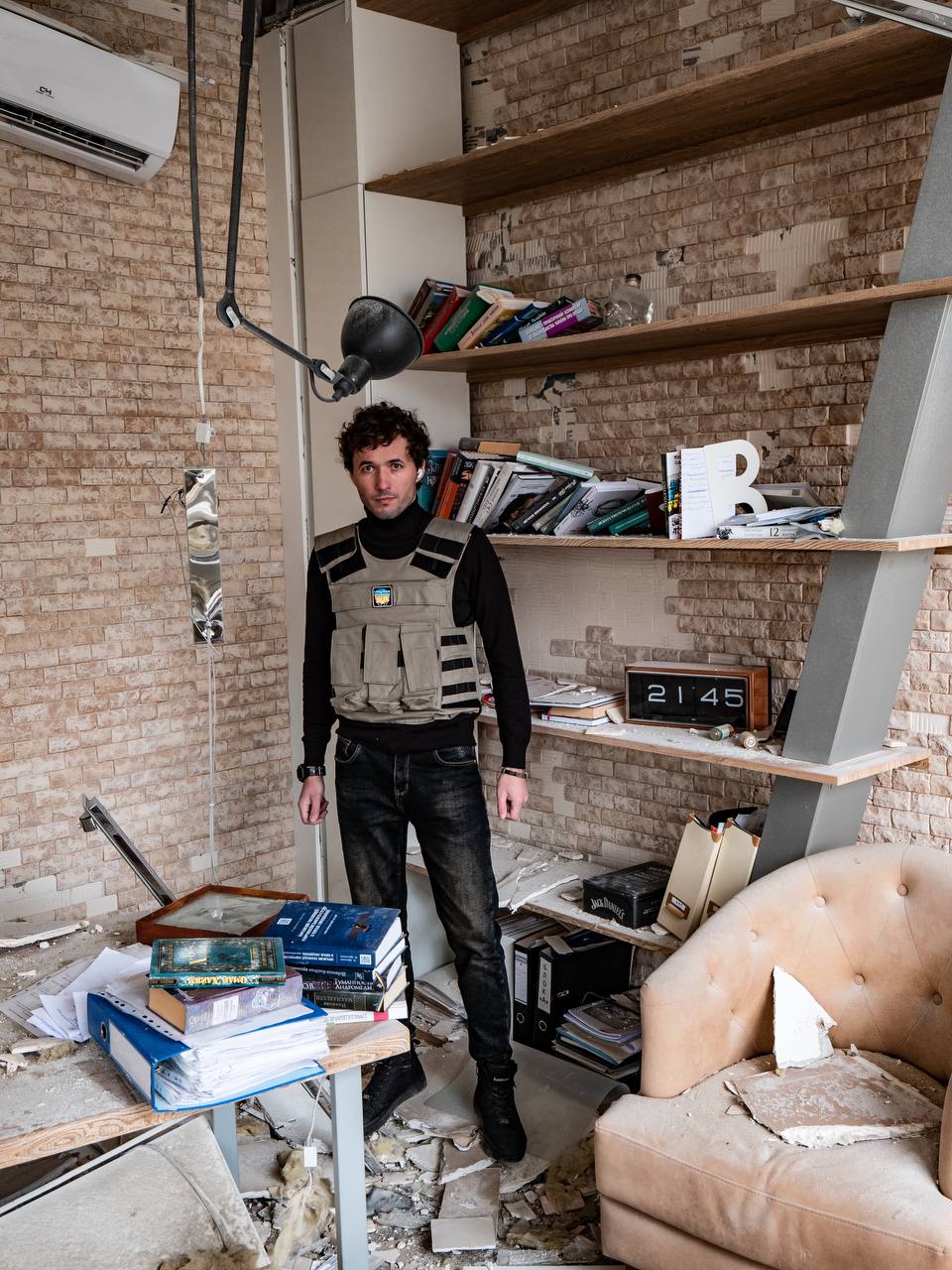 Photo: Yevhen Hilin, head of the Kherson-based NGO City of Power
Photo: Yevhen Hilin, head of the Kherson-based NGO City of Power
“The highway was empty. When I saw our soldiers standing calmly near the armored vehicles, I thought: if this continues, many of them may not survive until the next morning,” he recalls those moments.
After the evacuation of his family, Yevhen switched to volunteer work: attracting as much help and attention as possible to Kherson and the region became the main goal of him and his team.
In the first days of the occupation, people stayed at home, with no understanding, and made short runs to bring food to their neighbors. Over time, everyone realized that, especially after the tragedy in Bucha, the occupiers wanted to show that they were allegedly loyal to the people of Kherson.
“In Kherson, they wanted to show that a 'good' government had come, that everything would finally be great, that Kherson was now under the patronage of the 'great Russian Federation'. They wanted to make people want to cooperate. But it's good that Kherson residents didn't follow the strategy and started going to rallies and pickets to protest against the Russian occupation,” the volunteer says.
Many people, of course, wanted to leave. The first to try out the routes were the most desperate.
Yevhen's best friend, Anton Kushnin, who died on May 16, 2022, at the beginning of the occupation of the city, simply got in his car and drove to Antonivka and Oleshky. He was the first person from the region who managed to leave for Mykolaiv. In fact, he tested these new roads on himself, passed on important information about the conditions and rules of travel to the headquarters, and then everyone decided how to evacuate civilians and bring aid to the occupied region.
When looking for opportunities to get people out, volunteers were often disappointed. Some drivers asked for a large amount of money to transport their own citizens. The cost varied depending on the direction. For some places, they asked for 5-6 thousand hryvnias ($150) per seat. In some places, they had to pass 20-45 checkpoints.
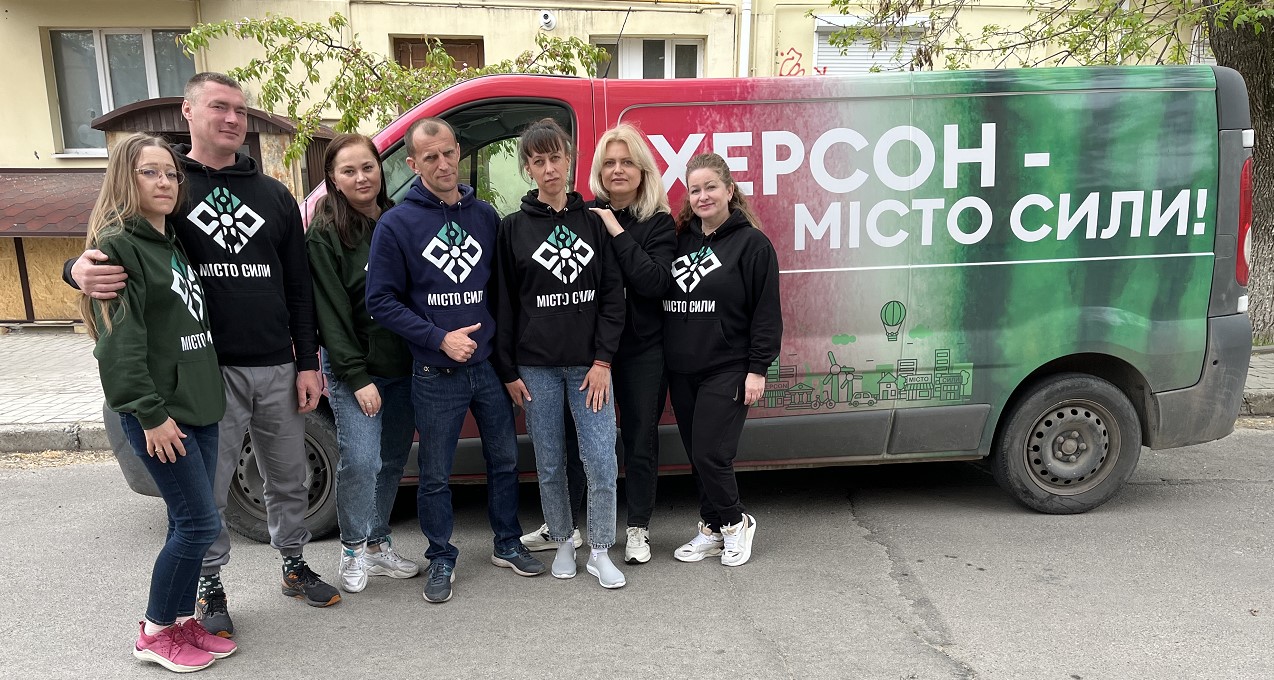 Photo: Team of the NGO City of Power
Photo: Team of the NGO City of Power
In the end, they found great carriers who took people out with their own buses. They were offered money, but some refused, while others agreed to cover direct expenses and drivers' salaries. And they were transporting people, risking everything.
“It was a two-way campaign: taking people out, the buses were coming back filled with humanitarian aid. I remember with great gratitude those carriers we involved in this work: Vitalii Prokopov, Artem Prysiazhnyi, Oleksandr Demchuk, Oleksii Hrybko, Oleh Kaminskyi, Konstantyn Bliznychenko, Yevhen Shtopel and many others,” the volunteer said.
'If you don't smoke, there is a high risk of starting in Kherson'
Today, two years after the liberation, Kherson faces dozens of challenges every day - the city has become a real southern outpost of Ukraine, notes Yevhen Hilin.
“Now everything is twisted here: peaceful life and military operations. Citizens, doctors, military, utilities, the UN, individual volunteers - all these people are holding the city together. When you come here, you can see janitors in bulletproof vests sweeping the streets despite the shelling. You can see minibus drivers wearing helmets. They are doing their jobs at the risk of their lives,” he describes the situation in the city.
As of November 1, 158,000 people live in the Kherson territorial community. Some settlements were left without people at all. Veremiivka and Petrivka have only a few residents, while Maiske and Mykolaivka have no one at all. Some villages have only 5-15 residents, and the daily shelling is just an extreme psychological pressure for them. Kherson itself is also suffering from shelling.
Volunteers are now thinking about where to get armored ambulances for local hospitals because medics are responding to calls in civilian cars, but Kherson is an active war zone. Last week, three medics were injured under fire. One of them died on the way to a call.
Ambulance crews risk their lives visiting all areas of the region where there are victims. Farmers are forced to clear their fields of mines, businesses are trying to adapt to the new tax conditions, and the authorities are facing many challenges.
“Local organizations like ours are simply torn between a lot of needs. Because most of the people who are left are elderly, for example. They cannot afford to leave their homes and look for another one. Local organizations run on constant coffee, cigarettes, on crazy adrenaline. If you don't smoke, there is a high risk that you will start in Kherson,” adds Yevhen.
 Photo: Volunteers in Kherson work on constant adrenaline
Photo: Volunteers in Kherson work on constant adrenaline
Recently, the city was stirred up by an investigation into the construction of a radiation shelter. People began to ask why it it necessary while the city is under fire every day.
There were already a lot of scandals around this, and the city authorities were unable to stop the leak into the public space. Construction has recently begun, but two guided bombs immediately flew in.
“All the work done was gone. Accordingly, the money has also disappeared. And people were not asked if they needed it now. Also, the construction of a school in Kherson, right in the five-kilometer zone from the enemy's line, was also hit. All the windows were blown out, and the walls of the apartments collapsed. The reason is clear to me as a lawyer - the local authorities have no dialog with the community, and in a state of war, such confrontation in the rear is unacceptable,” says Yevhen.
Choosing between home and the unknown
Despite all the difficulties, Yevhen is still impressed by the Kherson fighting spirit. In the city, the elderly are not just waiting for help - they are also actively involved in supporting the war effort. They cook meals for the military, weave camouflage nets, take care of animals, and help the city in any way they can. Everyone here feels important and tries to be useful.
“Kherson residents who left for Odesa, Lviv, Spain, or America also faced dangers. Some suffered from natural disasters. They say: “There is no place where you can be completely safe. So why leave? If we leave Kherson, we will get the same uncertainty, only without our home walls and with additional difficulties,” he says.
This logic is supported by emotions: for Kherson residents, their city is a place of comfort, familiar faces, atmosphere, and love for their native places on the banks of the Dnipro. Kherson is associated with beautiful landscapes, walks by the sea, and even dolphins on the horizon. People don't want to give up these values, even despite the risks.
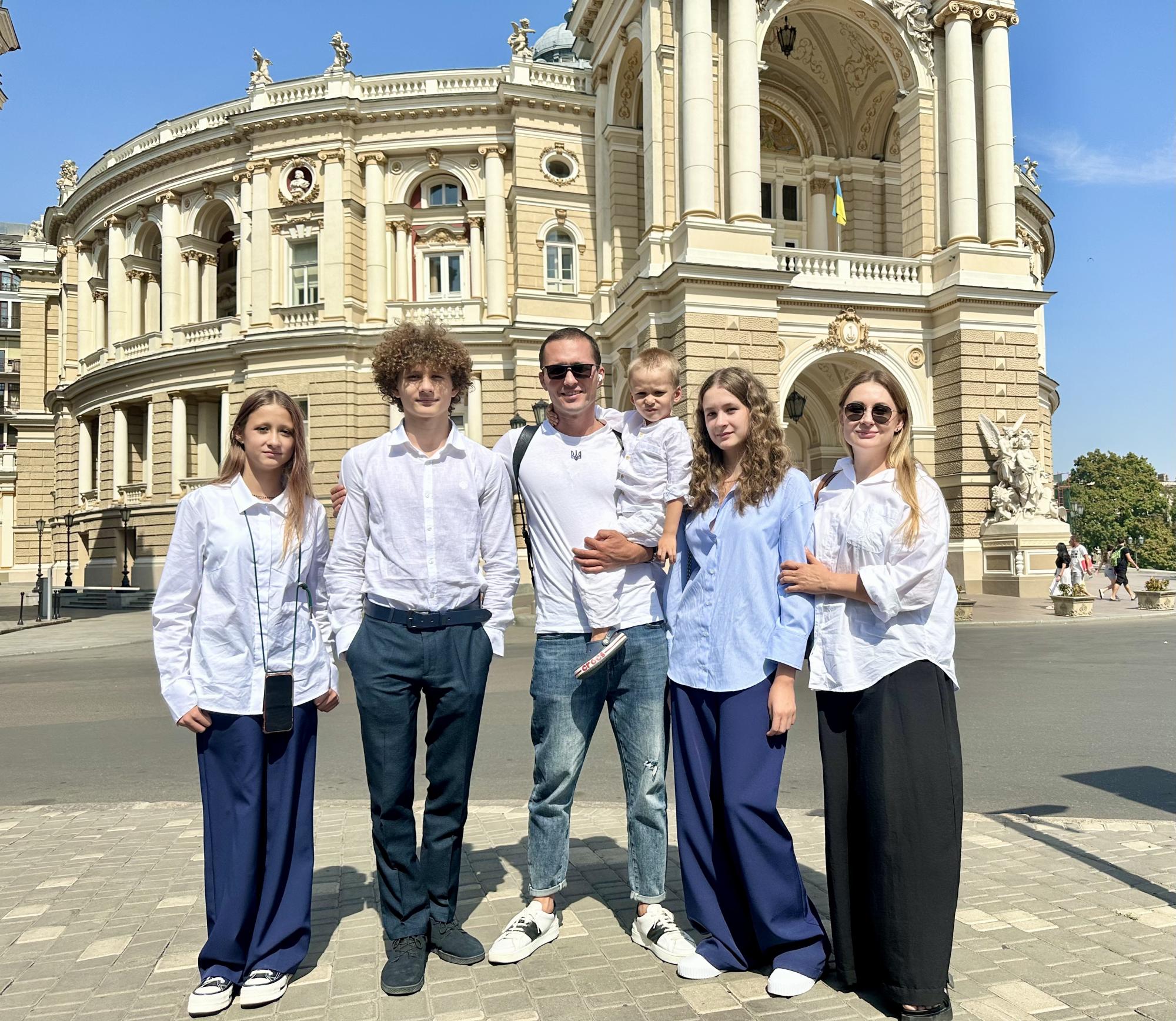 Photo: Yevhen Hilin with his family
Photo: Yevhen Hilin with his family
When people return from other sites, they often feel relieved: “That's it, I'm at home, everything will fall into place here.” The feeling of closeness and support helps them survive the shelling.
“For many Kherson residents, the decision to stay is a choice between their home and the unknown. There is uncertainty everywhere, but at home, where you have close people around you, where you can feel support, it seems less threatening. Neighbors bring pies, share water and milk - it fills people with a sense of unity and warmth. So, despite the constant shelling, the citizens stay together, help each other, and continue to fight for their city,” he emphasizes.
Iryna Ilina: 'I said I had a second-hand shop, but we were distributing medicines underground'
Before the war, Iryna Iliina of the Tarilka-Kherson NGO worked as a primary school teacher and rehabilitation therapist. She provided free services to children with disabilities from the organization. This is how her volunteering journey began - a couple of years before the Russian invasion of Ukraine.
“I remember that back then, some caring Kherson residents were helping the residents of the region and the city. We dreamed of instilling volunteering in everyone. It happened quickly, but not under the conditions we wanted. Our mission was to provide people with food, to help people and children with disabilities. We had many projects and plans. But on February 24, all Ukrainians' hearts and breathing stopped for a second,” she recalls.
A call to her family on the left bank: “Mom, wake up, there's a war.” Fear, anxiety, uncontrollable psychological state, anxiety - all this happened in the first week. But the team's support and cohesion allowed her to pull together.
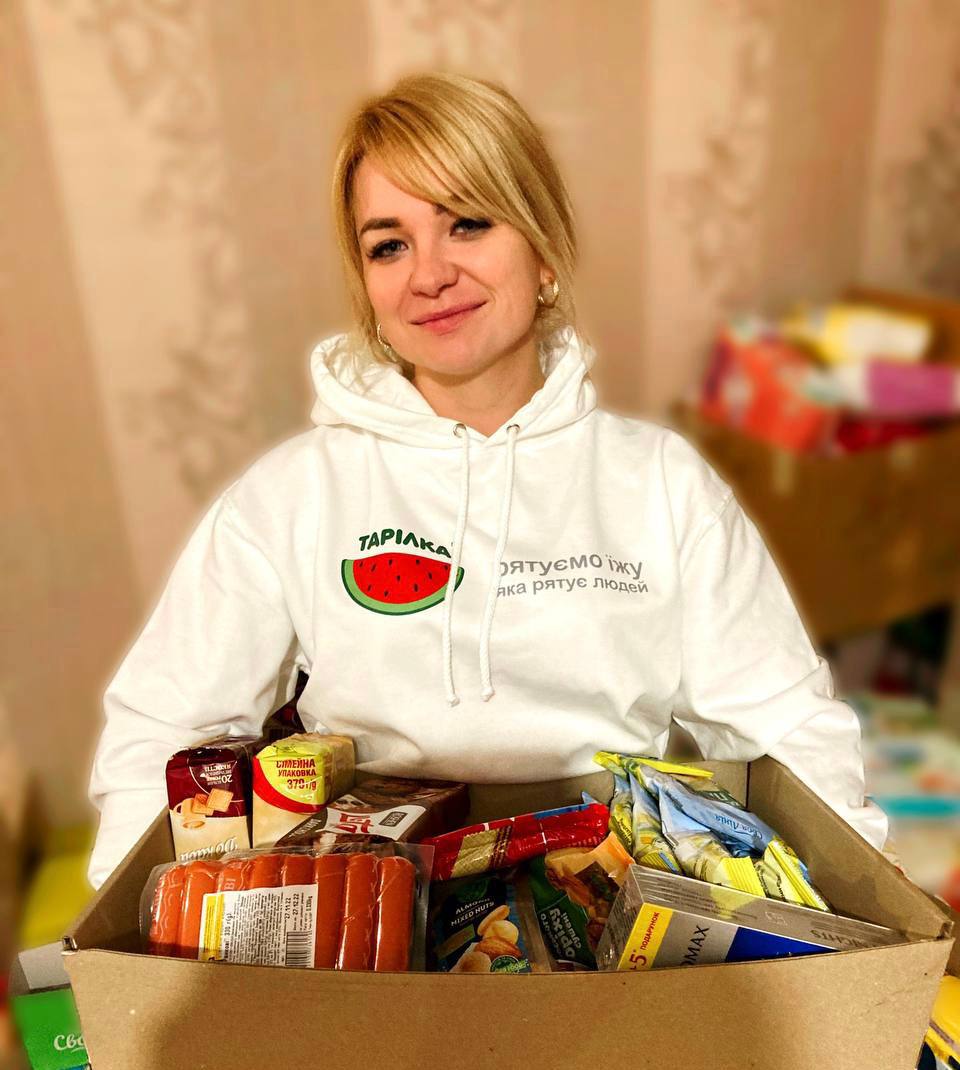 Photo: Iryna worked as an elementary school teacher and rehabilitation therapist before the great war
Photo: Iryna worked as an elementary school teacher and rehabilitation therapist before the great war
The volunteers had a “clothes bank” - a place where you could bring things or take them for free. Iryna spent all 8 months there every day. Many displaced persons, mothers with newborns - everyone either brought or took things.
“In the first month of the occupation, we forgot the word 'volunteer' because it was dangerous. I said that I had a second-hand shop, but we distributed medicines and food that we still received from the government-controlled territory. When we brought food to the villages, we told the checkpoints that we were going to sell it to a store. And when we got to the village, we quickly packed it in bags and carried it around the houses,” Iryna adds.
Funny things also happened during the occupation. For Iryna, this moment was when Buryats came to the clothes bank and asked where they sold tape recorders.
“We laughed for a long time. And then they asked where they could buy shoes. And I directed them to the children's store. We didn't laugh for long. Collaborators came and threatened to go to the commandant's office because 'I have a sign on my forehead that says I'm for Zelenskyy'. I laughed, lifting my hair. I said: What, it's so obvious?” she recalls.
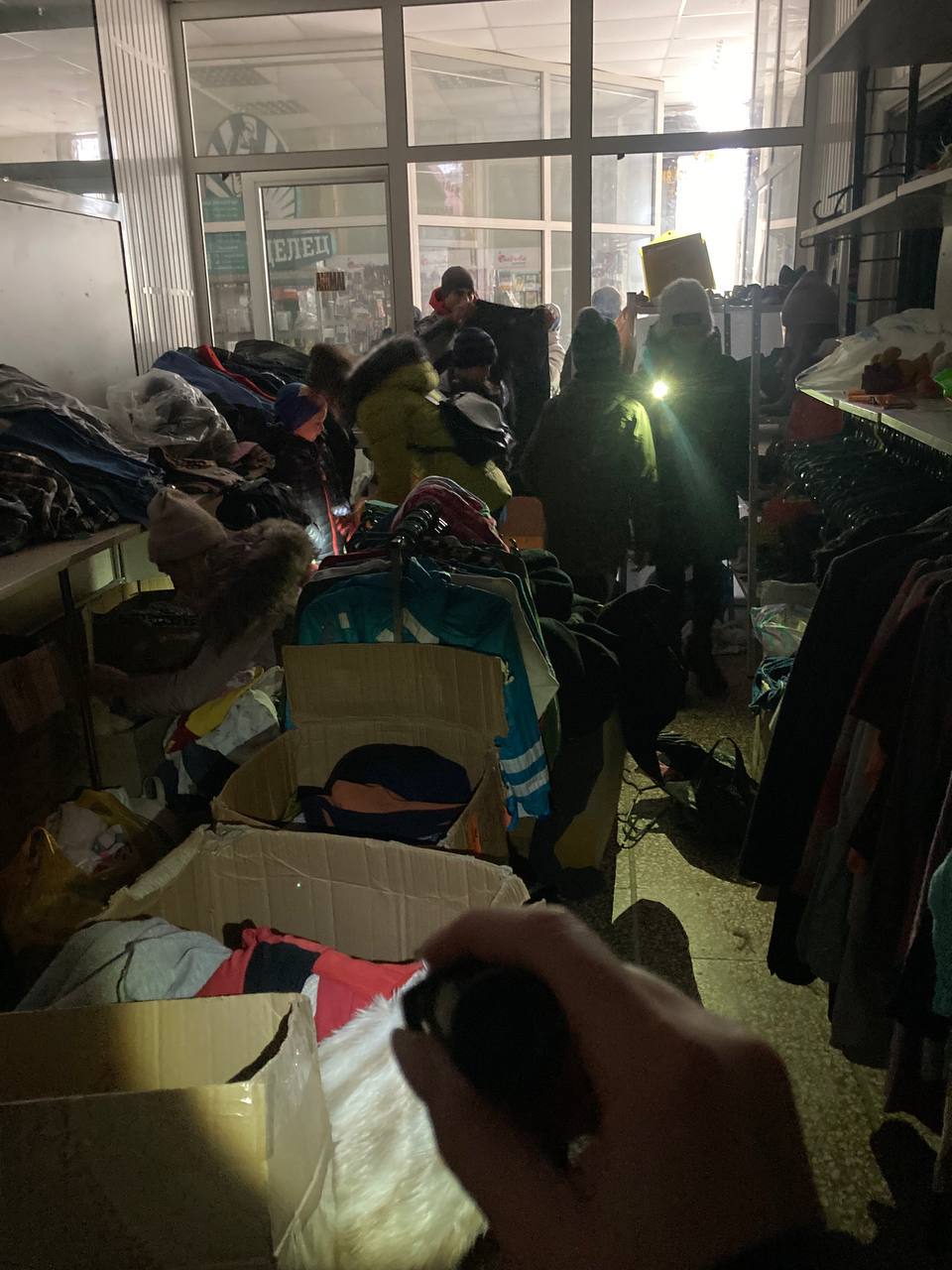 Photo: Bank of clothes during the occupation of Kherson
Photo: Bank of clothes during the occupation of Kherson
The volunteers delivered food packages to the needy in the villages and the city. They realized that some of the people they were helping could drastically “change their direction of patriotism.”
When they stopped by one village that was still under occupation, they quickly distributed the sets. Quickly because the volunteers were literally caught and taken to basements: the Russians realized that these people had ties to the government-controlled territory that supplies with funding. They wanted the volunteers to work for the occupiers.
“The package contains some food from the temporarily occupied Crimea. I remember an old man in that village who shouted at me to leave the yard because he didn't want to take the 'Russian' humanitarian aid. I begged him not to shout and told him that we were ours. And the proof was a bottle of oil in that package. It was a bottle with the word 'oil' written in Ukrainian. He calmed down and said: 'Okay, I'll take the oil, I won't take anything else.' People like that kept me going morally. I felt that I was not alone,” the volunteer says.
In that village, after they delivered the humanitarian aid, the Russians organized a search and asked who had come. Iryna simply told the locals that she was from Kherson. They were looking for a blonde girl from Kherson...
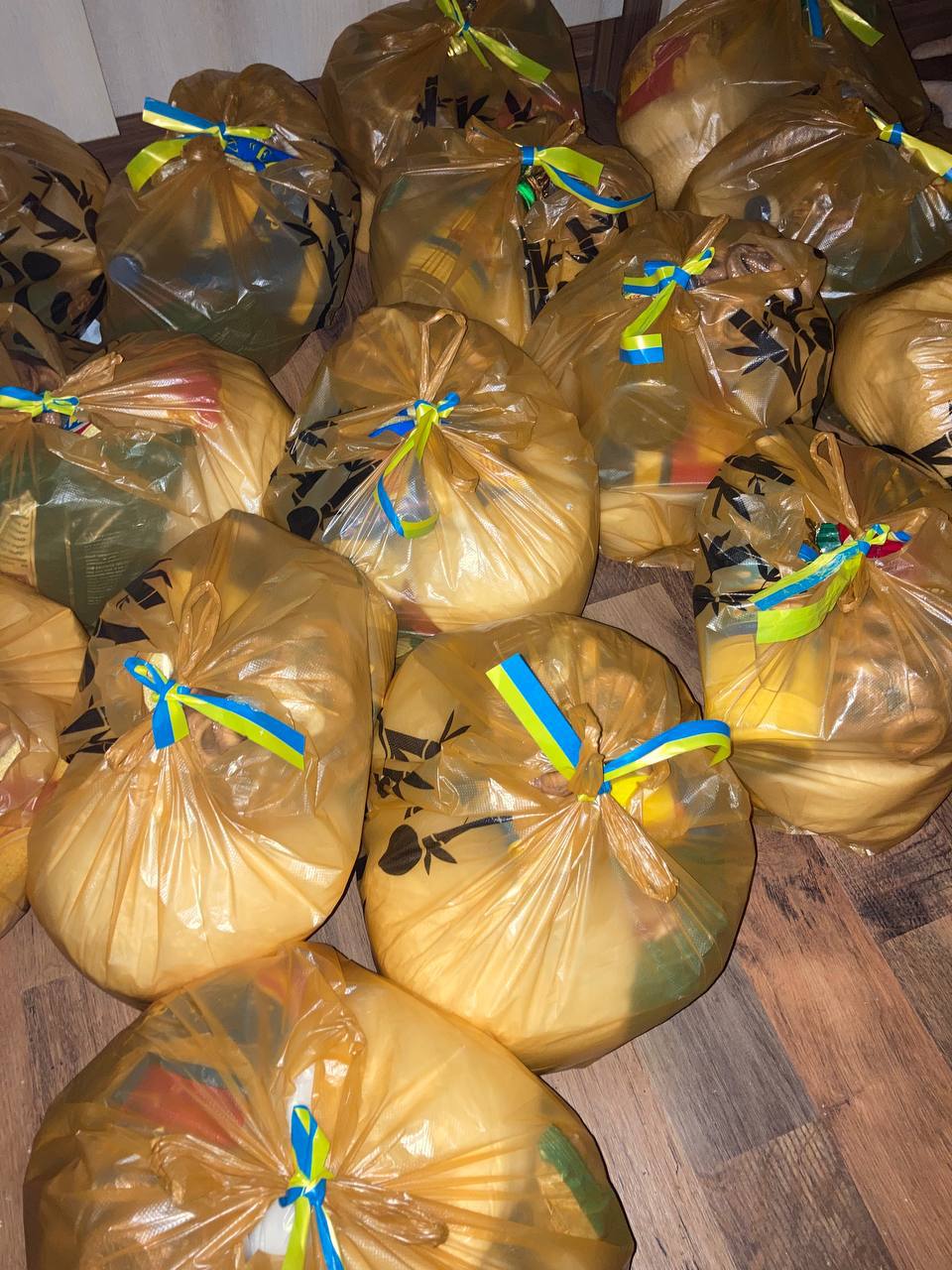 Photo: Food packages like this were distributed to people under occupation
Photo: Food packages like this were distributed to people under occupation
On the day the city was liberated, Iryna stood in line from the very morning to buy potatoes for people. There was no connection, no electricity, and no water.
“The seller whispered: 'Have you seen our people?' I just nodded my head, because who knows who his 'ours' are. It was already dangerous to voice. But a passing pickup truck with a Ukrainian flag explained everything. Tears of happiness. Emotions that I would like to experience more than once. I believed that it would happen to the last. And faith is the strongest feeling a person has,” Iryna recalls.
Iryna's parents remained on the left bank. She caught a connection near Antonivskyi Bridge, called her mother, and managed to say “We were liberated, we will meet soon”. But she did not understand how soon.
Iryna was constantly worried about her parents because the enemy continued to track her activities, and her parents remained under occupation. She kept telling her mom, “Wait, it will be over soon.” But the war had its own plans.
When the Kakhovka HPP exploded, Iryna was again overcome by those terrible feelings, just like on February 24. Then she lost contact with her family, and Kherson was flooded. The volunteers worked day and night, without rest.
After a few weeks, Iryna managed to persuade her parents to leave, and she was extremely grateful that they agreed. After all, the first line on the left bank is now destroyed. Now she believes that they will return and rebuild their home.
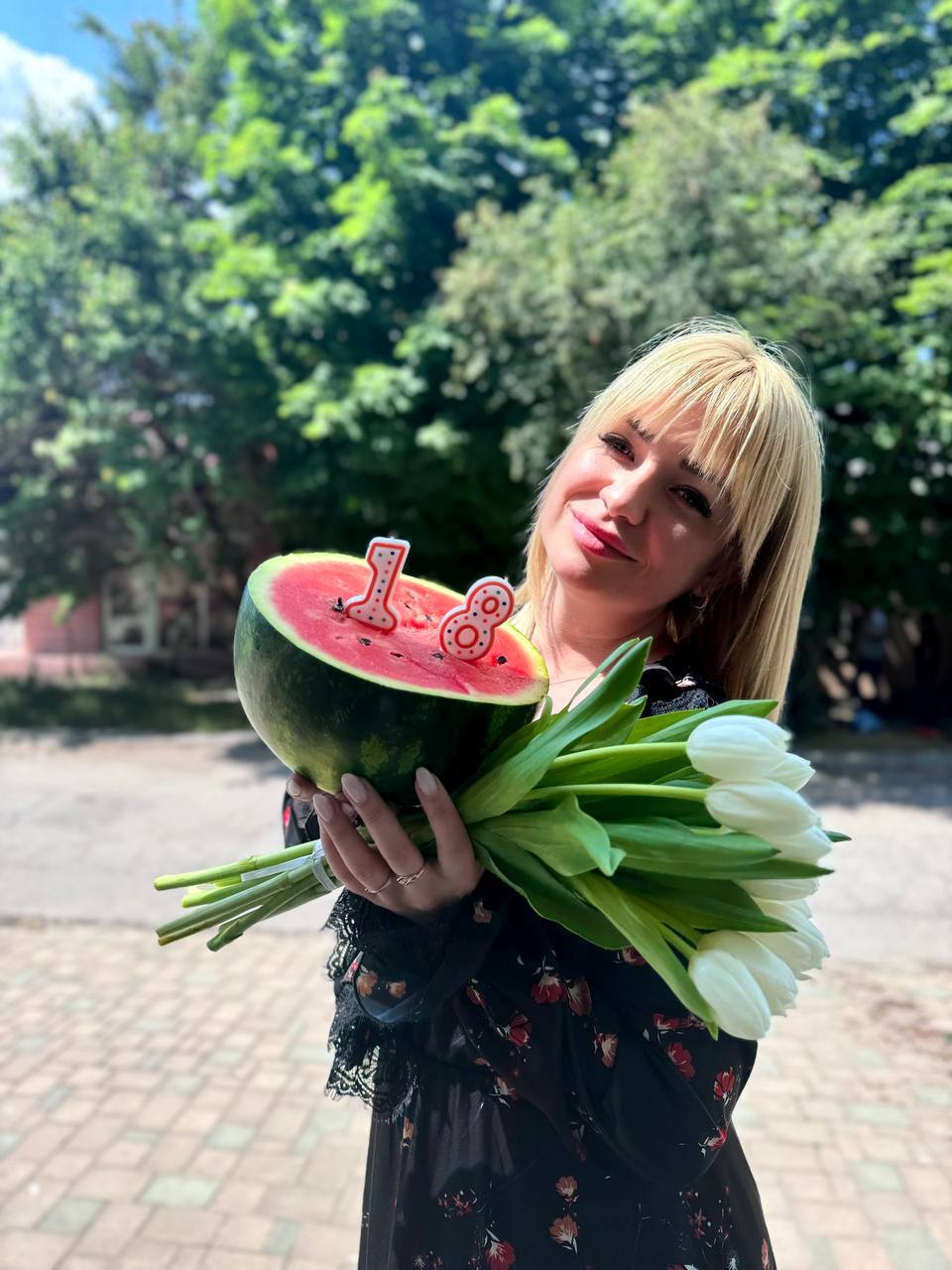 Photo: Iryna made a wish to celebrate her next birthday in free Kherson. And it came true
Photo: Iryna made a wish to celebrate her next birthday in free Kherson. And it came true
“Now I continue to help the Armed Forces, working on a project with the City of Power NGO. We created a mother and child development center called Grow Together, where trainers conduct speech therapy, physical therapy, master classes, movie nights, and much more for parents and children. This is not just a leisure activity. It's a small family that gives warmth and childhood to kids, especially now, when the situation in Kherson is extremely difficult,” says Iryna.
Iryna spent her birthday in May 2022 under occupation. She made one wish: to celebrate her next birthday in free Kherson. And it came true.
“It reminded me how much unity means. Just like then, we are doing our best to support each other. Today it is hard in the city. Kherson lives in the present, as shelling happens every minute, drone attacks every night. When it's quiet for a couple of days, we realize that this silence makes it even worse. But we do not give up. I believe in the best, just like I did during the occupation,” she adds.
Serhii Kindra: 'One needs to help people in order not to go crazy'
Before the large-scale war, Serhii Kindra from Kherson used to be a host of celebrations. On February 24, he started volunteering. After the occupation, he came under fire with his son, who died literally in his arms. Serhii has now only his younger son. Despite everything he has been through, he remains in Kherson and helps the military.
“I tell the families of the missing defenders: 'Pray, you have hope that he is somewhere in captivity. You have hope that your husband or son will call you. But I have no hope that my son will call and say 'Dad, hi'. I tell the girls to help comrades of the missing. It is important to bring a person who has faced misfortune out of the state of grief and into the state of a helper. It is important to do this at least to not go crazy. Doing good is the only thing that keeps them going,” says Serhii.
Kherson is now someone's crippled life every day. It's horrible to think that you get used to the constant shelling. Serhii cannot accept the shelling of civilians: in some cities, it is a resonance, but in Kherson, it is a daily routine.
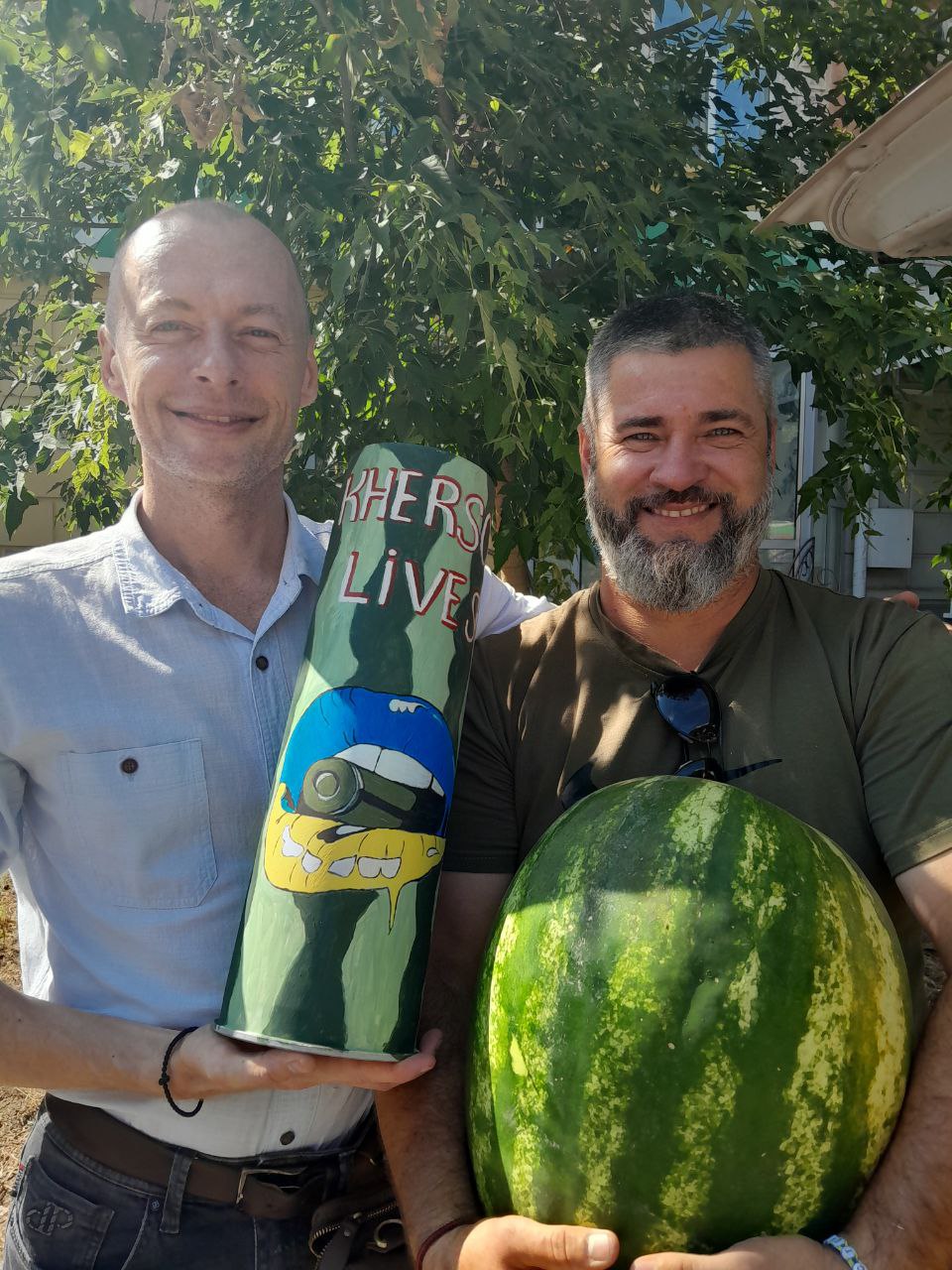 Photo: Serhii Kindra used to be a host of celebrations before the great war, and now he is actively involved in volunteering
Photo: Serhii Kindra used to be a host of celebrations before the great war, and now he is actively involved in volunteering
Those who are active in the city live practically underground. They hold workshops and events in the shelters. They also collect humanitarian aid there. It sounds scary, but few people pay attention to the air raid alert anymore: it often goes off constantly.
“I would say that there are some crazy people left in the city. There are a few places where these people intersect, all these chosen, crazy people. And the concentration is so intense. We almost all know each other. We know who has what resources, who we can turn to for what,” says the volunteer.
Dnipro River and fish have become a real help
When the first hits in Chornobaivka occurred at 4 a.m. on February 24, few people understood what was happening. And few believed that a war had actually begun. Later, the shelling of the Antonivskyi Bridge began.
In the first days, the volunteer went around the neighboring yards of his private sector, distributed his phone number to his neighbors, and arranged for signals in case of danger. The street quickly rallied, and people began to help each other. Others left en masse, leaving their homes, dogs, and cats behind. They gave him the keys to their homes and asked him to look after the animals.
"It was hard for those without food supplies. Then the Dnipro River and its fish became a real help: people who had never cooked fish before were now learning to fry it and make cutlets. The lines at the local dairy factory were enormous. But even in such a situation, my friends and I found medicine and helped each other. The lack of medical supplies became a very serious problem, and we tried to get them to people," recalls Serhii.
When the Russians arrived, many locals weren't afraid of them at all. Some even behaved bravely, desperately.
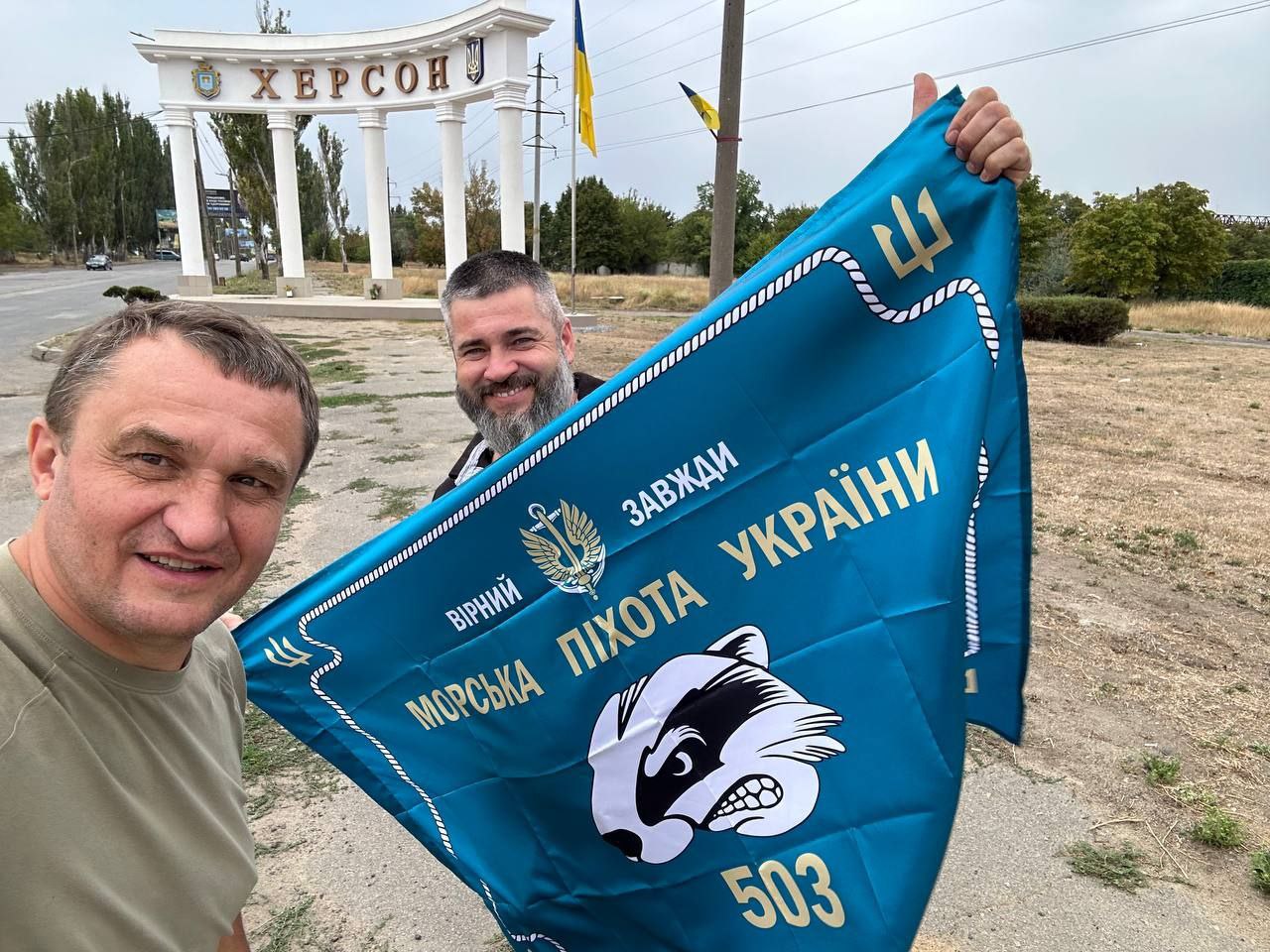 Photo: After the city was liberated, many at first didn’t believe the enemy had fled
Photo: After the city was liberated, many at first didn’t believe the enemy had fled
"We behaved as though we were the city's hosts. We told them they weren't welcome here. When cases of car seizures began, I told the guys to be more cautious," the man recalls.
After the arrival of the Russian Guard and other occupying forces, young men and women were detained and interrogated. Many of Serhii's friends who were "in basements" now call each other "basement brothers" and "basement sisters."
'At times, I thought: That’s it, the war is over'
In November 2022, Serhii initially didn’t believe that Kherson had been liberated from the occupiers, even when the first footage appeared online showing the Ukrainian Armed Forces on armored vehicles slowly approaching the city. Then there were joyful reunions between Kherson residents and Ukrainian defenders, images that went around the world.
"Many people saw the soldiers, but I thought it might be some kind of provocation. We were waiting for a signal from our own people because the Russians had prepared a large amount of equipment - armored vehicles lined the streets, and there were small checkpoints all over the city. I didn’t know whose equipment it was. When our troops arrived, it wasn’t immediately noticeable, but we already sensed that the situation was changing. The Russians seemed to be fleeing in a panic, unable to withstand our forces' advance," he says.
Nine months of occupation severely scarred Kherson. Many felt they were out of touch with life.
"When the Ukrainian Armed Forces entered Kherson, everyone was overjoyed to see them. It was joy, genuine joy. But, you know, with a bit of ‘I can’t believe this happened.’ These were sincere emotions. And some of our soldiers even felt shy about the welcome - people kissed them, hugged them, fed them. At times, it felt like, finally, the war was over," the man notes.
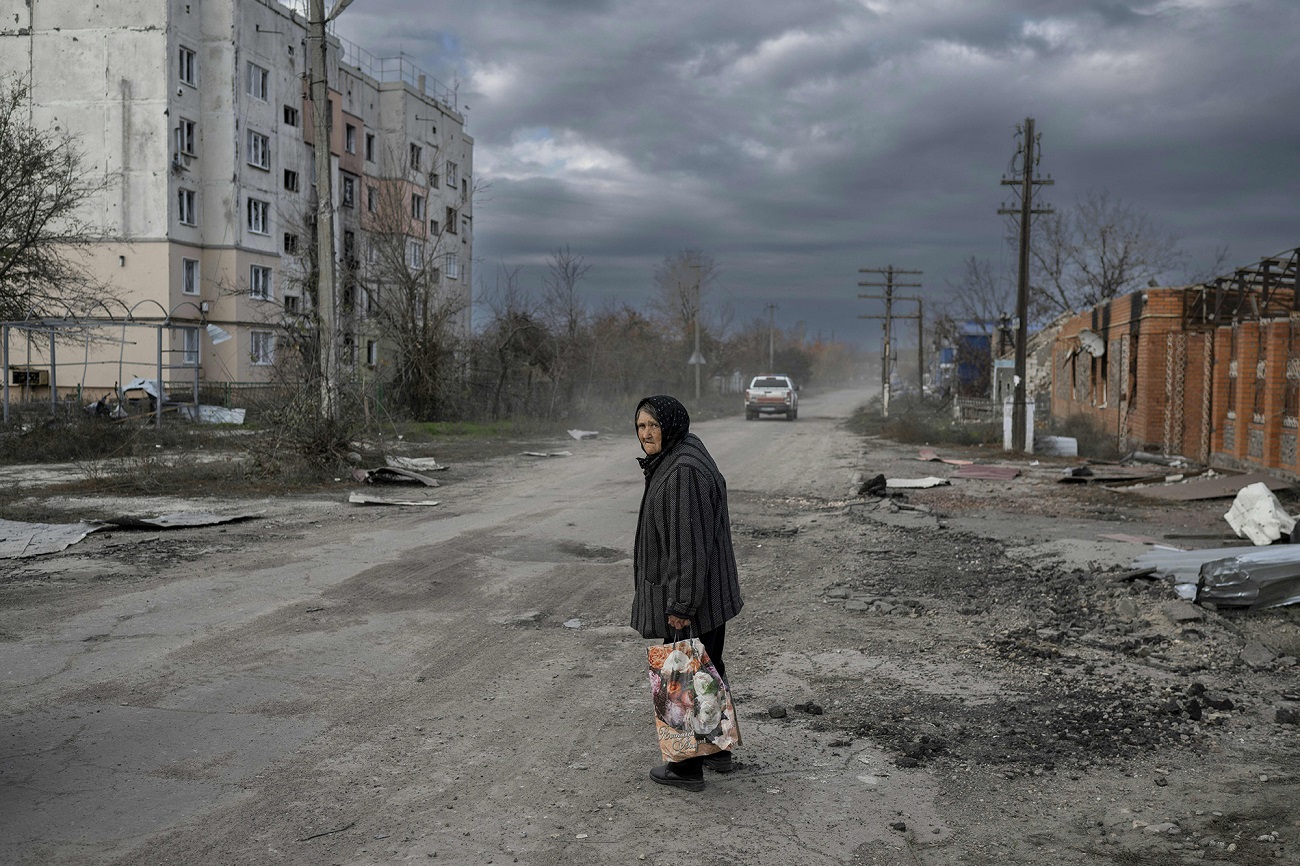
Photo: Kherson now faces dozens of challenges daily
For the first five days, there were no shellings. Complete silence. Serhii had the impression that during those days, the Russians were simply too busy fleeing the city in a panic. Everyone moved freely through the streets, with the Ukrainian military on every corner in pickups and civilian cars.
Then came everything we now read about daily in the news: shellings, casualties, the Kakhovka dam terrorist attack, the rescue of people. And more shelling.
Now Serhii, like many other Kherson residents, wishes the city received more attention.
“In Kyiv, millions were raised for Ohmatdyt. That’s good, no doubt. But in Kherson, there isn’t a single hospital that hasn’t been shelled. And there aren’t any large-scale fundraisers for them. Military needs haven’t disappeared either. International funds, by their principles, will help children and civilians but not the military. So, support for the Armed Forces remains on all of us," he says.
On the edge of despair and waiting for the war to end
While the full-scale war continues, more than 60% of Kherson's residents have left the city. But, despite everything, some people have returned. In the three summer months of this year, the city's population increased by 12,000 people.
But this isn’t about returning because the city has become safe. Many return due to disillusionment and an inability to adapt elsewhere. Some couldn’t find jobs, others needed to care for relatives.
“Last year, payments to most internally displaced persons were canceled. This also had a big impact. The few thousand hryvnias helped cover housing costs. And people came back because they had no money, no home. There were stories where people returned, a missile striked, and they perished,” says a volunteer sadly.
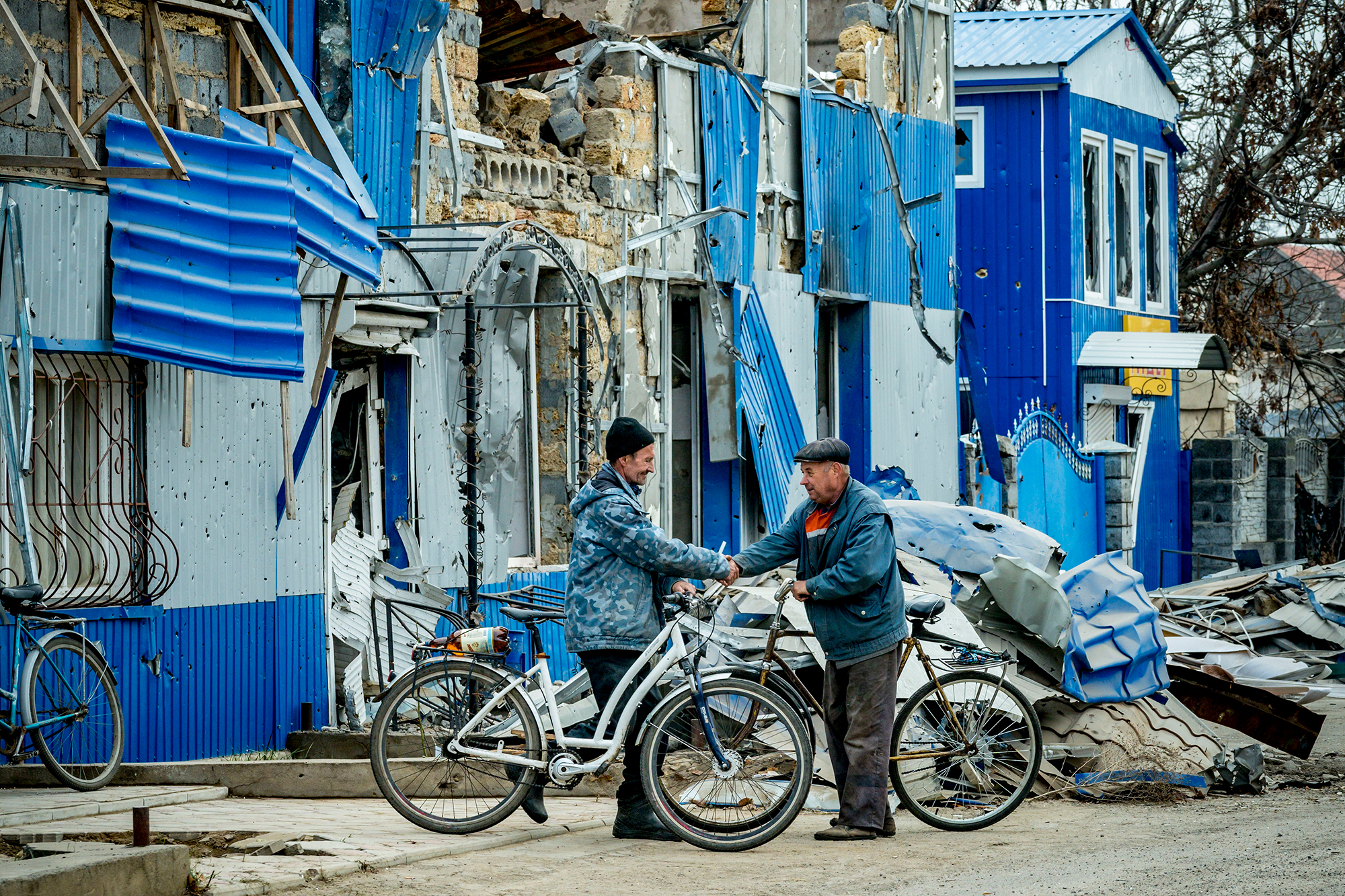
Photo: Daily shelling of the city and region continues
The danger to civilians also lies in the fact that some areas on the neighboring occupied bank are so close that you can see the faces of passersby. And even though they can clearly see civilians, the Russians fire on them. They don’t care if it’s an ambulance, a child, or an elderly woman.
Before the war, Serhii always said Kherson was a tourist city everyone should visit - picturesque Kherson wetlands, Oleshky sands, Dzharylhach Island, and the Arabat Spit. Unfortunately, all of these sites remain on the occupied left bank.
The volunteer adds that when the city was liberated, Kherson residents cried with joy. It gave them hope that soon other cities and villages would also be liberated. Now, two years later, Kherson lives on the edge of depression, despair, and disillusionment, yet still waits and hopes for the end of the war. Just as they once waited for the liberation of Kherson itself.
